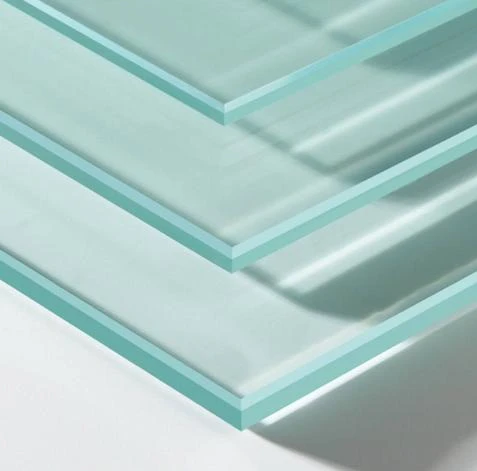The Manufacturing Process of Toughened Glass
Toughened glass, also known as tempered glass, is a type of safety glass that is treated to be much stronger than ordinary glass
. The manufacturing process of toughened glass involves several precise steps that ensure its durability and reliability, making it ideal for various applications including windows, doors, and even mobile phone screens.
The first step in the manufacturing process is the selection of raw materials. High-quality silica sand, soda ash, and limestone are the primary ingredients used in the production of toughened glass. These materials are carefully weighed and mixed to create a uniform batch. The mixture is then melted in a furnace at extremely high temperatures, typically around 1600 to 1700 degrees Celsius. This melting process transforms the raw materials into molten glass.
Once the glass has melted, it is formed into sheets of the desired thickness. This can be done using different methods, such as the float glass process, where molten glass is poured onto a bath of molten tin, or by rolling it. After forming, the glass sheets are slowly cooled in a controlled manner to reduce internal stresses.
The next critical step in the manufacturing of toughened glass is the heating process. The glass sheets are reheated in a tempering furnace, where they are exposed to temperatures between 600 and 700 degrees Celsius. This process enhances the strength of the glass through a technique known as thermal tempering. During this phase, the outer surface of the glass cools more rapidly than the inner layers, creating a state of compression on the surface and tension within the center. This differential cooling process significantly increases the glass's strength and resistance to thermal shock.
manufacturing process of toughened glass
Once the heating phase is complete, the glass is rapidly cooled in a controlled manner, a process known as quenching. This sudden cooling solidifies the compressive stress on the surface and stabilizes the structure of the glass. The result is a product that is approximately five to six times stronger than standard glass and can withstand much higher impact forces.
After tempering, the toughened glass undergoes several quality control tests to ensure that it meets safety and performance standards. These tests include checking for distortions, color uniformity, and dimensional accuracy. Glass that passes these tests is deemed ready for cutting and finishing.
The last stage involves cutting the toughened glass to the required sizes and shapes. Cool cutting tools are used to ensure that stress is not introduced during this process. The edges of the glass are then polished to provide a smooth finish and to eliminate any sharp edges that could pose a safety hazard.
In summary, the manufacturing process for toughened glass is a sophisticated and controlled series of steps that culminate in a product that is both strong and safe. From the selection of raw materials to the final cutting and polishing, each phase plays a critical role in ensuring that the glass meets the rigorous demands of various uses. As a result, toughened glass is widely utilized in architectural structures, vehicles, and countless consumer products, offering both aesthetic appeal and safety.
 Afrikaans
Afrikaans  Albanian
Albanian  Amharic
Amharic  Arabic
Arabic  Armenian
Armenian  Azerbaijani
Azerbaijani  Basque
Basque  Belarusian
Belarusian  Bengali
Bengali  Bosnian
Bosnian  Bulgarian
Bulgarian  Catalan
Catalan  Cebuano
Cebuano  Corsican
Corsican  Croatian
Croatian  Czech
Czech  Danish
Danish  Dutch
Dutch  English
English  Esperanto
Esperanto  Estonian
Estonian  Finnish
Finnish  French
French  Frisian
Frisian  Galician
Galician  Georgian
Georgian  German
German  Greek
Greek  Gujarati
Gujarati  Haitian Creole
Haitian Creole  hausa
hausa  hawaiian
hawaiian  Hebrew
Hebrew  Hindi
Hindi  Miao
Miao  Hungarian
Hungarian  Icelandic
Icelandic  igbo
igbo  Indonesian
Indonesian  irish
irish  Italian
Italian  Japanese
Japanese  Javanese
Javanese  Kannada
Kannada  kazakh
kazakh  Khmer
Khmer  Rwandese
Rwandese  Korean
Korean  Kurdish
Kurdish  Kyrgyz
Kyrgyz  Lao
Lao  Latin
Latin  Latvian
Latvian  Lithuanian
Lithuanian  Luxembourgish
Luxembourgish  Macedonian
Macedonian  Malgashi
Malgashi  Malay
Malay  Malayalam
Malayalam  Maltese
Maltese  Maori
Maori  Marathi
Marathi  Mongolian
Mongolian  Myanmar
Myanmar  Nepali
Nepali  Norwegian
Norwegian  Norwegian
Norwegian  Occitan
Occitan  Pashto
Pashto  Persian
Persian  Polish
Polish  Portuguese
Portuguese  Punjabi
Punjabi  Romanian
Romanian  Russian
Russian  Samoan
Samoan  Scottish Gaelic
Scottish Gaelic  Serbian
Serbian  Sesotho
Sesotho  Shona
Shona  Sindhi
Sindhi  Sinhala
Sinhala  Slovak
Slovak  Slovenian
Slovenian  Somali
Somali  Spanish
Spanish  Sundanese
Sundanese  Swahili
Swahili  Swedish
Swedish  Tagalog
Tagalog  Tajik
Tajik  Tamil
Tamil  Tatar
Tatar  Telugu
Telugu  Thai
Thai  Turkish
Turkish  Turkmen
Turkmen  Ukrainian
Ukrainian  Urdu
Urdu  Uighur
Uighur  Uzbek
Uzbek  Vietnamese
Vietnamese  Welsh
Welsh  Bantu
Bantu  Yiddish
Yiddish  Yoruba
Yoruba  Zulu
Zulu 

